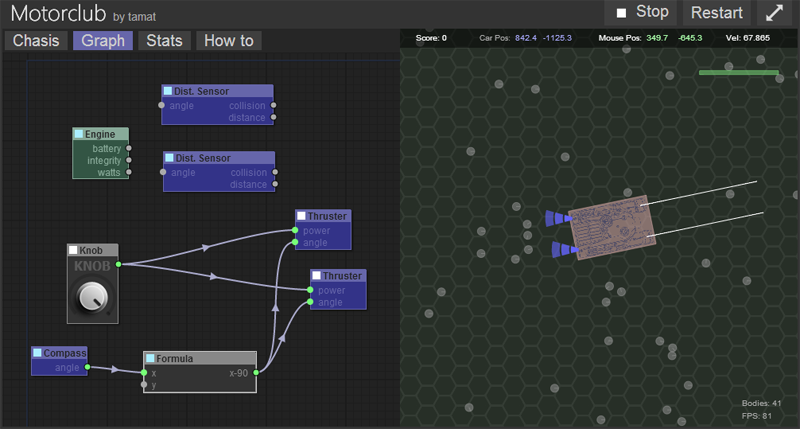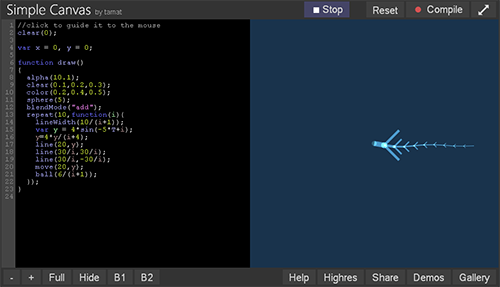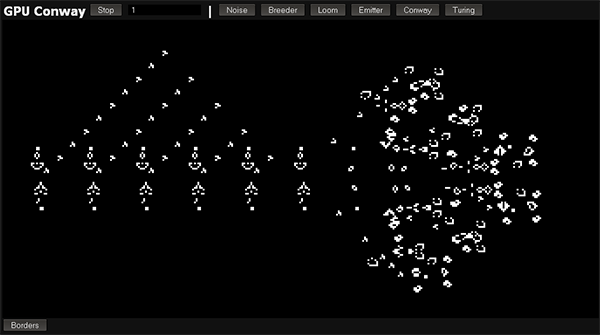This last year I’ve been trying to redirect my programming skills to more creative fields. Thanks to technologies like HTML and Javascript now its easier than ever to prototype applications fully functional across all platforms.
The objective is to be able to prototype an idea fully functional (no matter the context: audio, video, graphics…) in the least possible time, without having to waste time doing a fancy setup.
I wrote down ten rules that I must follow at all cost to ensure that I become better as a programmer, to help reach more creative areas of coding, instead of following the old spiral of trying to make the best engine/library ever as I’ve been doing for the last 5 years. This rules I call them “The Decalogue for the Guerrilla Coder”:
- You need to master a full framework, and environment to code rich applications that provide all possible outputs with not much effort, that allows you to work with images, audio, video, network, UI, etc. (something like HTML5, iOS SDK, Flash, Java, …) and create a set of classes and functiones to adapt it to your needs.
- You need to master a server side platform, to allow your users to interact between each other. Something like Python, PHP, Java or Node.js, and full knowledge of the HTTP protocol and sockets.
- You need to master a UNIX shell, to launch processes remotely, interact with your server side scripts, configure daemons, crons, GITs, etc.
- You need to know how to code using a simple text editor, and it should be done remotely. No fancy IDEs with auto-completion, and auto-configuration of libraries.
- You need to master a high-level language and a low-level language, and be able to make them interact between each other. Using small C like apps executed in command line from scripts instead of huge monolithic apps.
- You need to know how to code real-time applications, those application where the performance is critical to succeed, where you need to recompute the data at least 60 times per second.
- You have to be able to carry all you need to code in your laptop, no big multicore workstations with dual monitors and huge desktops.
- You need to master mathematics and basic programming algorithms, to be able to compute calculations, animations, interpolations, extract data, sort, find…
- You must be able keep your code simple, using some design patterns but not over-engineering it. Using simple concepts but self-consistent. Self-explanatory code. Do not abusing optimizations in the wrong places.
- You must code fast, without wasting time in design, deploy, and test. You have to be able to test your code changes instantly. You need to have your app template ready to start, so when an idea comes to your mind, you can have it running in a couple of hours.
As you can see I didnt say anything about working in teams or using repositories, mostly because a guerrilla coder creates alone. The idea of being creative usually conflicts with the concept of working in teams, so unless you find a good way to split the work, it is always better to work alone.
I hope I can get better in some of them in the next year.






